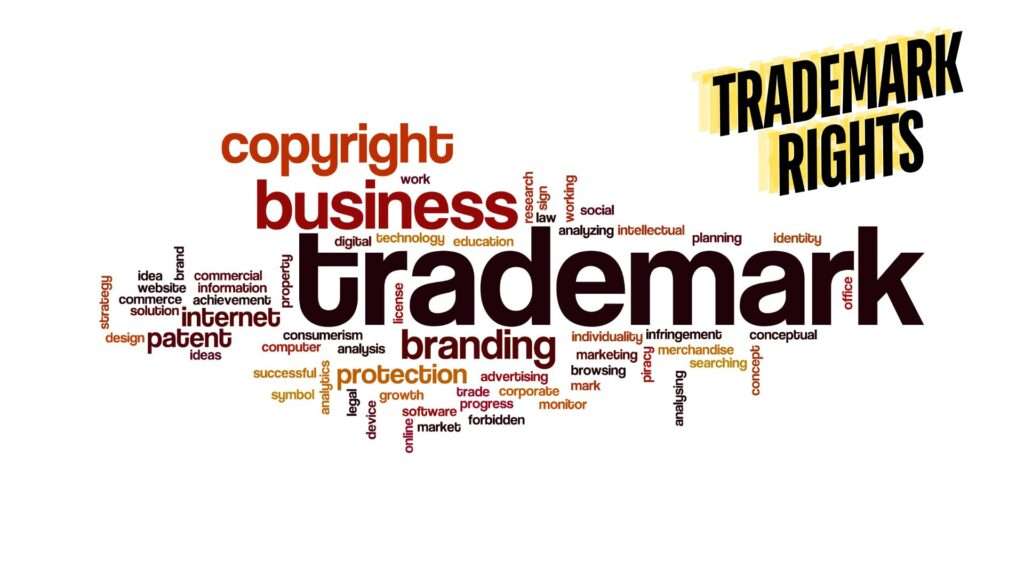In the bustling city of Los Angeles, where innovation and entrepreneurship are at their zenith, the protection of one’s brand becomes paramount but a question is often raised as to how long do trademarks last in Los Angeles, and more broadly in the United States. As businesses embark on the journey of brand protection and trademark registration, a question often emerges: What is the trademark timeline and how long does a trademark last? This blog summarizes the term of trademark rights, the trademark timeline, how long does trademark protection last, and provides examples of some of the oldest trademarks in the United States.
Establishing trademark rights in the United States involves several methods, each offering varying levels of protection. By understanding the differences between common law rights, state registration, and federal registration, and by following best practices for trademark use and enforcement, you can effectively protect your brand. For expert legal advice and assistance, reach out to David Nima Sharifi, Esq. at L.A. Tech and Media Law Firm.
Trademark Timeline for Protection
In the vast legal landscape of the United States, trademark rights are protected under two distinct legal umbrellas:
- Federal trademark law, colloquially known as the Trademark Act or the Lanham Act.
- The age-old common law.
Each layer of protection offers a unique term, with some areas of intersection. Here is the typical trademark timeline for technology startups and entrepreneurs:
1. Pre-Application Stage: Trademark Search and Preparation
Duration: 1-2 weeks
Activities:
- Conduct a Trademark Search: Before filing a trademark application, perform a comprehensive search to ensure your desired trademark is not already in use. This involves checking the USPTO database and other relevant sources.
- Prepare the Application: Gather necessary information, such as a clear depiction of the trademark, a description of the goods or services associated with it, and the basis for filing (use in commerce or intent to use).
Key Considerations:
- A thorough search can prevent potential conflicts and legal disputes.
- Proper preparation ensures a complete and accurate application, reducing the likelihood of rejections or delays.
2. Filing the Trademark Application
Duration: Immediate upon submission
Activities:
- Submit the Application: File your trademark application with the USPTO. You will receive an immediate confirmation of filing, along with a serial number for tracking the application.
Key Considerations:
- Filing fees are required at the time of submission. Ensure all information is correct to avoid additional costs or delays.
3. USPTO Examination Process
Duration: 3-6 months
Activities:
- Initial Review: The USPTO assigns an examining attorney to review the application for compliance with legal requirements.
- Office Actions: If the examining attorney identifies issues, an office action will be issued. You have six months to respond to office actions to avoid abandonment of the application.
Key Considerations:
- Respond promptly and thoroughly to office actions to address any concerns raised by the examining attorney.
 4. Publication in the Official Gazette
4. Publication in the Official Gazette
Duration: 30 days
Activities:
- Public Notice: If the application passes examination, it is published in the USPTO’s Official Gazette. This public notice period allows third parties to oppose the registration of the trademark.
Key Considerations:
- If no opposition is filed within the 30-day period, the application proceeds to the next stage. If opposition is filed, it can delay the process significantly.
5. Notice of Allowance and Statement of Use (Intent-to-Use Applications Only)
Duration: 6 months to file Statement of Use, with possible extensions
Activities:
- Notice of Allowance: For intent-to-use applications, a Notice of Allowance is issued after successful publication. You then have six months to file a Statement of Use or request an extension.
- Statement of Use: Submit evidence that the trademark is being used in commerce.
Key Considerations:
- Up to five extensions of six months each can be requested, providing a total of three years to submit the Statement of Use.
6. Registration Certificate Issuance
Duration: 2-3 months after acceptance of Statement of Use
Activities:
- Final Review and Registration: Once the Statement of Use is accepted, the USPTO issues a registration certificate, officially granting trademark rights.
Key Considerations:
- Ensure all post-registration maintenance and renewal deadlines are met to keep the trademark in force.
7. Post-Registration Maintenance
Duration: Ongoing, with specific deadlines
Activities:
- Maintenance Filings: File necessary maintenance documents to keep the registration active. Key deadlines include:
- Section 8 Declaration of Use (between the 5th and 6th years after registration).
- Section 9 Renewal (every 10 years).
- Combined Section 8 and 15 Declaration of Incontestability (after 5 years of continuous use).
Key Considerations:
- Failure to file maintenance documents can result in the cancellation of the trademark registration.
Tips for Managing the Trademark Timeline
- Use a Docketing System:
- Implement a reliable docketing system to track all deadlines and ensure timely submissions.
- Consult with a Trademark Attorney:
- An experienced attorney can help navigate the complexities of the trademark process and manage deadlines effectively.
- Stay Informed:
- Regularly check the status of your application through the USPTO’s Trademark Status & Document Retrieval (TSDR) system.
For a confidential consultation to discuss your trademark application process and timeline management, contact David Nima Sharifi, Esq. today. Ensure your brand is protected with professional guidance and strategic legal support.
Common Law Trademark Timeline
Common law trademark rights are established through the actual use of a trademark in commerce. These rights arise automatically when you start using a trademark to identify your goods or services within a specific geographic area.
Key Points:
- Usage-Based: Rights are acquired by using the trademark in connection with your goods or services.
- Geographic Scope: Protection is limited to the geographic area where the trademark is used.
- First Use Priority: Common law rights are based on the principle of “first in time, first in right,” meaning the first party to use the trademark in commerce has priority over others.
Advantages:
- Automatic Rights: No registration is required to acquire common law rights.
- Cost-Effective: Establishing common law rights does not involve filing fees.
Disadvantages:
- Limited Protection: Geographic scope is limited, and enforcement can be challenging outside the immediate area of use.
- Proof of Use: You must be able to demonstrate continuous and ongoing use of the trademark in commerce.
Trademark Timeline: Federal Trademark Registration
Federal trademark registration through the United States Patent and Trademark Office (USPTO) offers the most comprehensive protection for trademarks in the United States. It provides nationwide rights and several legal advantages.
Key Points:
- Nationwide Protection: Federal registration grants exclusive rights to use the trademark nationwide.
- Legal Presumptions: Provides a presumption of ownership and the exclusive right to use the trademark.
- Incontestability: After five years of continuous use, a trademark can achieve incontestable status, providing stronger protection against challenges.
Advantages:
- Broad Protection: Extends trademark rights across the entire United States.
- Legal Benefits: Includes the ability to bring infringement suits in federal court and recover statutory damages.
- Customs Protection: Allows for the recording of the trademark with U.S. Customs and Border Protection to prevent importation of infringing goods.
Disadvantages:
- Cost: Involves filing fees and potential legal costs for the application process.
- Complex Process: Requires adherence to specific procedural requirements and possible responses to office actions.
The Finite Nature of Federal Trademark Rights: 5 or 10 Years
According to the edicts of the United States Patent and Trademark Office (USPTO) and the federal trademark law, trademarks registered under the USPTO have a lifespan of 5 years. However, this is not the end. A beacon of hope exists in the form of a trademark renewal, which, if filed validly, extends this term.
In the hallowed corridors of the USPTO, trademark renewals have a tenure of 10 years. After this time, the duty falls upon the trademark owner to file another renewal, ensuring the registration remains intact. While this cycle of renewals might seem laborious, it comes with a silver lining. There exists no cap on the number of renewals one can file. In essence, a trademark, with timely renewals filed in the USPTO, can achieve immortality.
The Trademark Timeline of Common Law Trademark Rights
The annals of common law hold a different tale. Under its protective wing, the trademark timeline for trademarks are eternal, contingent only on the trademark owner’s adherence to the test for trademark use. In layman’s terms, as long as the trademark is used in the marketplace, it remains unassailable.
A Glimpse into the Past: Age-old Trademarks in the United States
The testament to the enduring nature of trademarks lies in the brands that have withstood the test of time. Here are some venerable examples:
- COLGATE® for toothpaste (protected since 1806)
- JIM BEAM® for whisky (protected since 1795)
- JPMORGAN CHASE® for financial services (protected since 1799)
- TABASCO® for hot sauce (protected since 1869)
- GUINNESS® for beer (protected since 1876)
- COCA-COLA® for carbonated beverages (protected since 1893)
The Everlasting Nature of Trademarks: A Beacon for Entrepreneurs
For the visionaries and pioneers in technology startups, the knowledge that their trademark, be it a logo, brand name, or slogan, can transcend time is heartening. Unlike the ephemeral nature of copyright rights or patent rights, trademarks stand tall, their protection unwavering across the globe.
Best Practices for Establishing and Protecting Trademark Rights
- Conduct a Thorough Trademark Search:
- Perform a comprehensive search to ensure your trademark is not already in use or registered by another entity. This helps avoid potential conflicts and legal disputes.
- Use the Trademark Consistently:
- Consistent and proper use of the trademark in commerce is essential for establishing and maintaining rights. This includes using the trademark on products, packaging, marketing materials, and websites.
- Document Trademark Use:
- Keep detailed records of how and when the trademark is used. This documentation can be critical in proving first use and continuous use in commerce.
- Monitor and Enforce Your Trademark:
- Regularly monitor the market for potential infringements and take prompt action to enforce your rights. This may involve sending cease and desist letters or pursuing legal action.
- Seek Legal Assistance:
- Consulting with an experienced trademark attorney can help navigate the complexities of trademark law and ensure your rights are adequately protected.
In Conclusion
For those seeking guidance in the labyrinth of trademark registration and protection in Los Angeles, the expertise of David Nima Sharifi of L.A. Tech and Media Law Firm awaits. Embark on your trademark journey with a seasoned navigator with over 17 years experience in trademark law and startup legal and business affairs by your side.
For a confidential consultation to discuss establishing and protecting your trademark rights, contact David Nima Sharifi, Esq. today. Ensure your brand is safeguarded with professional guidance and strategic legal support.


 4. Publication in the Official Gazette
4. Publication in the Official Gazette